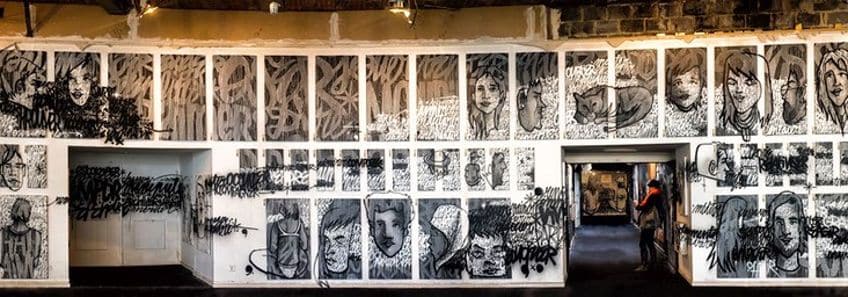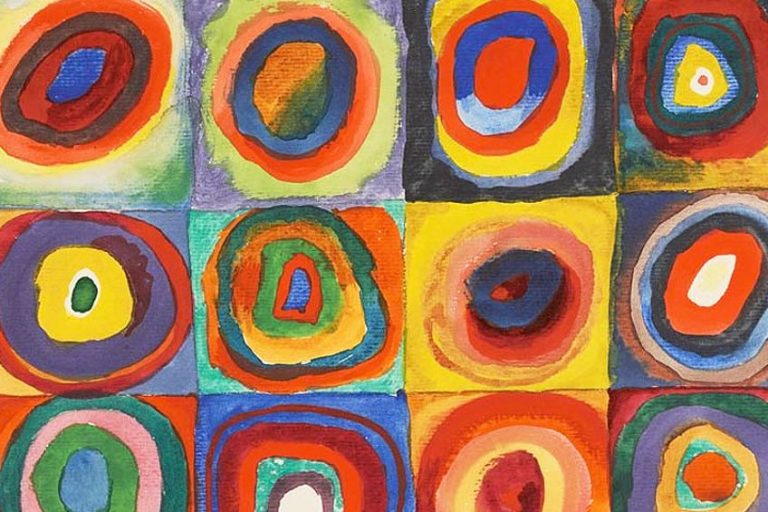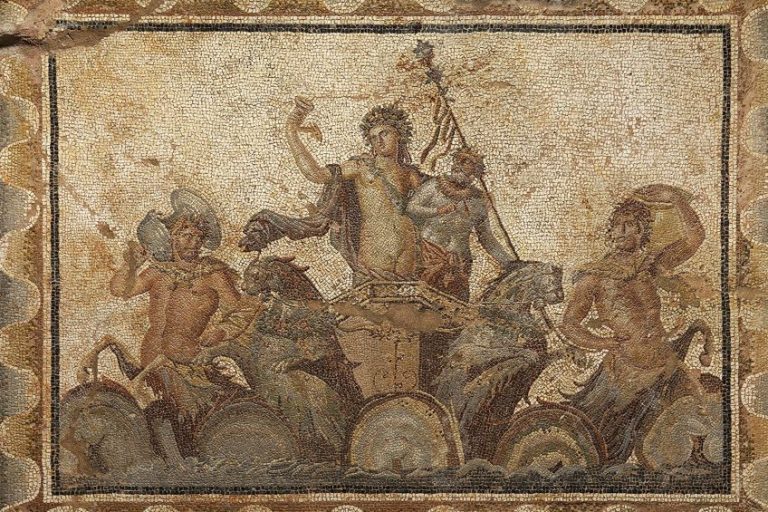Grunge Art – The Alternative Underworld of Grit and Imperfection
Grunge art emerged as a rebellious and raw artistic movement in the late 20th century, deeply rooted in the underground music and alternative culture scenes of the time. Characterized by its gritty, distressed aesthetic, Grunge art defies traditional norms and embraces imperfection, often incorporating elements of collage, graffiti, and DIY techniques. This art form reflects a counter-cultural attitude, challenging mainstream ideals and embracing the beauty found in decay and chaos. In this article, we delve into the origins, characteristics, and impact of Grunge art, exploring its significance in the broader landscape of contemporary art.
Key Takeaways
- Grunge art reflects a gritty and rebellious spirit through its DIY aesthetic.
- It values authenticity and imperfection, often featuring distressed and layered designs.
- The style has deeply influenced both the cultural ethos of the 1990s and modern-day creative expressions.
What Is Grunge Art?
Grunge art is a visual style that encapsulates the raw energy and DIY aesthetic of the grunge music movement which originated in the late 1980s. With its roots firmly planted in the gritty urban scenes of cities like Seattle, grunge art emerged as a visual counter-narrative to the polished finish prevalent in mainstream media and design during that era. It embodies a rebellious spirit, often characterized by distressed textures, crude lines, and a sense of authenticity that challenges conventional beauty and standards.

The essence of grunge art lies not only in its edgy and urban visual impact but also in its attitude. It dismisses the traditional pursuit of perfection and instead embraces imperfections, showcasing vibrant intensity through its chaotic and layered compositions. The elements of grunge design include rough textures, erratic typography, and muted or sometimes jarring color schemes. This approach to artmaking became a conduit for expressing the disaffected voice of a generation, shaping the creative landscape of the 1990s and leaving a lasting influence that reverberates through contemporary design. Characteristics of Grunge art included:
- Aesthetic: Grunge art is marked by a grimy, rugged look that seems to emerge from urban decay.
- Textures: They often use textures that suggest wear and tear, such as scratches, stains, and smudges.
- Typography: The use of distressed fonts and irregular, handwritten typography is prevalent.
- Color palette: Colors tend to be muted, dark, and desaturated, reflecting a mood of disaffection.
Grunge art is not confined to the past; it continues to influence contemporary design. It connects with a desire for authenticity and a do-it-yourself (DIY) approach, often utilizing collage elements and mixed-media. The grunge aesthetic champions the beauty found in imperfection and the casually unkempt. It is indifferent to trends, and its essence lies in its unapologetic departure from the conventional.
In essence, grunge art captures a moment in time where the youth expressed their disillusionment with society, not through words but through the visceral visual language of grunge. It remains a staple for those who resonate with the underlying message of unpretentious expression.
Historical Context of Grunge Art
Grunge Art evolved as a visual counterpart to the raw sound of grunge music, reflecting the zeitgeist of its era with a focus on authenticity and a rejection of the polished.

Emergence and Cultural Roots
Originating in the mid-1980s in Seattle, grunge was more than just a sound—it was a cultural movement that encapsulated feelings of disaffection and rebellion. Bands like Nirvana, Pearl Jam, and Soundgarden fostered a music scene that was both a response to and a reflection of the urban decay and social disillusionment experienced by many during this period. The visual art movement of grunge paralleled its musical sibling with a raw and chaotic aesthetic. It was heavily influenced by the punk rock ethos of anti-commercialism and a DIY attitude. Notable figures like David Carson, a pioneer in grunge graphic design, utilized typographical and layout chaos to challenge conventional design norms.
- David Carson: A key figure whose work in graphic design exemplified the grunge aesthetic.
- Characteristics: Imperfect and distressed visual elements that communicated a sense of authenticity and nonconformity.
- Graphic design and visual art: Incorporating elements of urban decay and an alternative approach to the sleek graphics of the era.
Grunge art, whether in graphic design or visual art, was a tangible expression of the generation’s angst and stood in contrast to the polish and newness that characterized much of popular culture.
The Overall Feeling of Rebellion
Grunge art embodies a spirit of defiance, reflecting the gritty energy of its musical counterpart from the late 1980s and early 1990s.

Influence on Design and Visual Art
Grunge design left a profound mark on the visual art landscape. It emerged as a visual protest, a stark departure from the polished and digital aesthetics of the time. The approach was raw, often featuring:
- Textures: Scratched, worn, and distressed
- Typography: Irregular, chaotic, reminiscent of punk rock flyers
- Imagery: Bold, unrefined, capturing the grime of urban environments
This aesthetic disrupted the status quo, showcasing a distinct preference for authenticity over perfection.
Characteristics of Grunge Design
Grunge design emerged as a visually stark contrast to the clean and minimalist aesthetic, embracing the edgy and unrefined qualities that mirror its origins in grunge music and culture.

Aesthetic Elements
Grunge design is known for its raw and moody attributes, often featuring a collage of elements that appear layered and distorted. Commonly used aesthetic components include:
- Textures: Grunge often incorporates a variety of textures that can give a tactile sense of roughness or decay.
- Rough edges: Imperfections such as uneven lines and torn effects evoke a handmade, organic feel.
- Stains: Elements reminiscent of stains, splatters, and smudges are prevalent, adding to the overall sense of grittiness.
- Graffiti: Graffiti-style fonts and elements lend a voice to the rebellious spirit inherent in grunge.
Application in Digital and Graphic Design
In digital and graphic design, the grunge style can be seen influencing a wide range of mediums, including web design. They utilize these design elements:
- Gritty backgrounds: Websites may use backgrounds with a gritty texture to convey an edgy atmosphere.
- Edgy fonts: Typography often attributes a distressed look, incorporating elements of graffiti for an urban edge.
- Layered images: Designs may overlay multiple images and text, creating a layered, deep visual experience with an element of controlled chaos.
By integrating stains, textures, and graffiti, designers achieve a grunge signature that is as expressive as it is unconventional.
Creating Grunge Art
Grunge art consists of distinct techniques and tools that enable artists to generate art with an edgy, raw aesthetic. This section explores the methods used to create Grunge art across various mediums, from traditional painting to modern digital creations.

Grunge Art in Painting
In painting, Grunge art is characterized by a raw, unfinished look that often incorporates torn paper, handmade textures, and vintage visuals. Artists may start with a base layer of ink or diluted paint, using broad, unchecked strokes to establish the foundational atmosphere. Emphasis is placed on incorporating materials that provide a sense of decay or age, like weathered photos or pages from old books.
Collages created from these elements can further the aesthetic, resulting in a layered, deep visual experience.
Traditional Techniques
Traditional Grunge art relies heavily on DIY practices. Artists might employ common household items or found objects to stamp, smear, or distress surfaces, embracing imperfections. Hand-drawn elements are often juxtaposed against sketchy lines or splatters of ink, creating contrast. Collage techniques are prominent, where artists might integrate torn paper or fabric to add texture and depth, capturing Grunge’s essence of rebellion and the DIY ethos.

Modern Approaches and Tools
Modern creators have extended Grunge into the digital realm, where designers leverage software to emulate traditional Grunge textures and effects. Digital brushes can mimic the effect of painting, sketching, and inking, allowing designers to infuse their work with a sense of tactility that Grunge demands. With digital tools, artists can blend scanned images of traditional media, hand-drawn elements, or typography with digital art, resulting in innovative expressions of the Grunge style.
They can also experiment with layering and photo manipulation, producing work that harkens back to the gritty, authentic roots of Grunge while pushing into new territories.
Grunge Art in Popular Culture and Commerce
Grunge art reflects the gritty, raw aesthetic of the early 1990s grunge music scene, shaping both pop culture and commercial design. It is known for its anti-establishment vibe and DIY approach, which have been incorporated into various facets of popular culture and commerce.

Art and Entertainment
The grunge style has significantly influenced entertainment and art, often visible in grunge wall art and home decor. These items frequently showcase bold textures and imagery resonant with the grunge ethos and are commonly found on Etsy, a vibrant advertising platform for independent artists. There, watch teams and community groups provide updates and share information regarding new grunge style items, ensuring that enthusiasts are connected to the latest products and activities.
Furthermore, the visual aspects of grunge have infiltrated film and television production design, with settings and costumes reflecting the movement’s rough-and-tumble spirit. Productions that aim to evoke a sense of the ’90s often incorporate grunge-inspired imagery, contributing to a nostalgic and authentic representation.
Commercial Use and Merchandising
In commerce, grunge design is leveraged for its appeal to nostalgia and its distinct, attention-grabbing style. Advertising materials on platforms ranging from social media to print media employ grunge typography and textures to stand out and evoke a sense of edginess or authenticity.

Merchandising has also embraced the grunge aesthetic. Retailers offer kits and supplies for creating grunge-inspired artwork, reflecting the demand for products that cater to the DIY nature of grunge. These merchandising sets might include ephemera—vintage or aged items—to help consumers achieve the grunge look in their creative projects. As this style continues to influence the commercial world, its symbiosis with pop culture remains clear: both driving and reflecting the public’s fascination with the raw, unpolished, and authentic expressions of grunge art.
Legacy Left by Grunge Art
Grunge art, emerging from the late 1980s and peaking in the 1990s, left a lasting impact on design and visual expression. Characterized by its raw and unconventional aesthetics, grunge art mirrored the gritty, emotional undertones of its musical counterpart. It embodied a rugged beauty that stood in contrast to the polished standards of the time.
Grunge art popularized a do-it-yourself approach, encouraging artists to embrace an unrestrained and intuitive creative process. This ethos has since become a driving force behind many contemporary design movements, emphasizing individuality and personal expression. The use of distressed textures and mixed typography in Grunge art became hallmarks of the movement, creating a sense of rawness and authenticity. These textural elements continue to influence design aesthetics today, adding depth and character to various artistic and commercial ventures.
The enduring appeal of grunge lies in its embrace of imperfection and authenticity, values that resonate strongly with contemporary movements emphasizing individuality and personal expression.
This cultural resonance ensures that grunge art remains a relevant and influential force in the art world. Rooted in the aesthetic of urban decay, grunge art continues to inspire artists who seek to capture and reflect the complexities of societal landscapes and narratives. Its connection to urban environments provides a rich source of inspiration for artwork that explores the rawness and authenticity of urban life.
Grunge art challenged traditional beauty norms, empowering designers and artists to explore the aesthetic potential of disorder and chaos. Its influence is evident in the way modern graphic design integrates notions of imperfection to achieve a more organic and approachable visual language. Despite evolving trends, the legacy of grunge art remains embedded within the creative community, ensuring its principles continue to inspire future generations of artists and designers.

Grunge Art Today
Grunge art, recognized for its raw and unrefined aesthetic, continues to influence contemporary artists. Originating as a subversive visual movement coinciding with the grunge music scene of the 1990s, it has since been adapted and reinterpreted by modern creatives.
Today’s grunge art retains the hallmark elements of spontaneity and a rebellious spirit, but it often merges these with new techniques and mediums.
- Digital influence: Artists now incorporate digital tools, creating grunge art with a modern twist.
- Mixed media: Utilization of physical and digital elements signifies a blend of traditional and contemporary practices.
- Aesthetic fusion: Contemporary grunge art sees a fusion with other styles and cultures, broadening its appeal.

Notable characteristics include chaotic lines that reflect a sense of turmoil and energy, raw textures that emphasize an unpolished look, and bold typography that is often used for a strong visual impact. Designers in the current era are reviving the grunge aesthetic in graphic design, where it visibly seeps into album covers, posters, and fashion. This resurgence highlights the enduring appeal of the style’s inherent honesty and its capacity for emotional expression. While echoes of the past remain, the artists of today are pushing the boundaries of grunge art, ensuring its relevance in a rapidly evolving cultural landscape.
Grunge art remains a powerful testament to the spirit of defiance and authenticity that characterized the alternative movements of the late 20th century. Its enduring influence can be seen in the works of contemporary artists who continue to push boundaries and challenge conventional artistic norms. By embracing imperfection, chaos, and raw expression, Grunge art has left an indelible mark on the art world, reminding us of the beauty found in the unconventional.
Frequently Asked Questions
What Are the Historical Origins of Grunge Art?
Grunge art has its genesis in the late 1980s, closely connected to the grunge music scene that emerged in Seattle. It is a visual style that embodies the angst and rebellious spirit of youth, mirroring the gritty, raw sound of grunge bands like Nirvana and Pearl Jam.
What Kind of Motifs and Themes Are Commonly Found in Grunge Art?
Common motifs in grunge art include urban decay, anti-establishment symbols, and a pronounced use of mixed typography. Themes often explore disaffection, social alienation, and a desire to break free from societal norms. The art is known for its sarcastic and sometimes dark narrative elements.
How Can Grunge Aesthetics Be Incorporated into Modern Design?
Modern design can adopt grunge aesthetics by incorporating distressed textures, a muted and dark color palette, and a deliberate sense of chaos. Designers often use elements such as rough edges, hand-drawn illustrations, and mixed fonts to evoke the grunge ethos within contemporary works.
Isabella studied at the University of Cape Town in South Africa and graduated with a Bachelor of Arts majoring in English Literature & Language and Psychology. Throughout her undergraduate years, she took Art History as an additional subject and absolutely loved it. Building on from her art history knowledge that began in high school, art has always been a particular area of fascination for her. From learning about artworks previously unknown to her, or sharpening her existing understanding of specific works, the ability to continue learning within this interesting sphere excites her greatly.
Her focal points of interest in art history encompass profiling specific artists and art movements, as it is these areas where she is able to really dig deep into the rich narrative of the art world. Additionally, she particularly enjoys exploring the different artistic styles of the 20th century, as well as the important impact that female artists have had on the development of art history.
Learn more about Isabella Meyer and the Art in Context Team.
Cite this Article
Isabella, Meyer, “Grunge Art – The Alternative Underworld of Grit and Imperfection.” Art in Context. March 25, 2024. URL: https://artincontext.org/grunge-art/
Meyer, I. (2024, 25 March). Grunge Art – The Alternative Underworld of Grit and Imperfection. Art in Context. https://artincontext.org/grunge-art/
Meyer, Isabella. “Grunge Art – The Alternative Underworld of Grit and Imperfection.” Art in Context, March 25, 2024. https://artincontext.org/grunge-art/.











